ROYAL PALACE FULL-DAY TOUR (II)
-
- Price
- 99,000 KRW / Person
- Minimun Pax
- 3 People
- Time
- Daily 09:00am ~ 18:00pm
- Inclusion
- Transportation, English-speaking Tour Guide, Admission Fees, Hotel Pick-up/Drop-off Service, Lunch, VAT.
- Exclusion
- Personal Expenses.
Tour Course
-
- Hotel
- Pass by The Blue House
- The Royal Guard Changing Ceremony
- Gyeongbokgung Palace & National Folk Museum (Deoksugung Palace & History Museum on Tuesday)
- Jogyesa Buddhist Temple
- Ginseng Center
- Lunch
- Insadong Antique Shop Alley
- N Seoul Tower
- Namsan Hanok Village (Myeongdong on Tuesdays)
- Amethyst Center
- Hotel.
Highlights
-
-
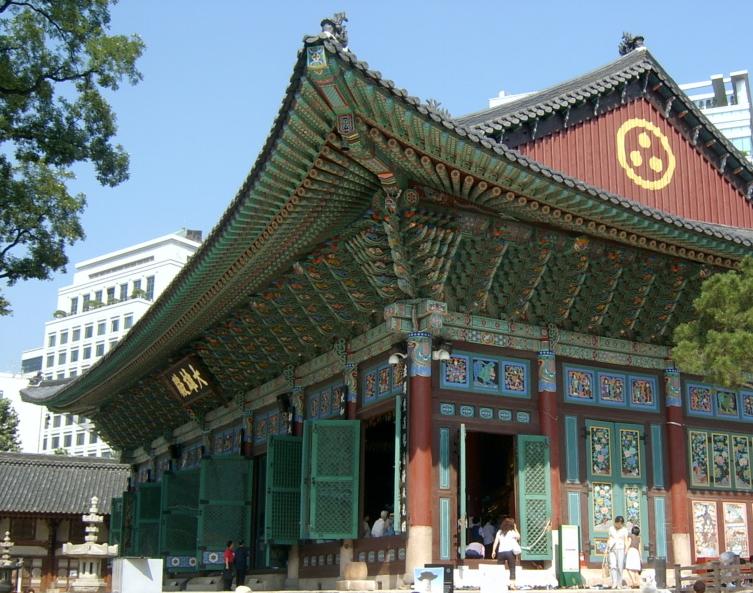
-
- Jogye Buddhist Temple
-
One hudred years old Buddist temple
22% of Korean believes Buddism and Chogeysa located in the center of Seoul is known as one of respected temples in Korea. Beyond its religion background, it attracts everyone with its artistic value. Beautiful golden statue of the budda and unique fragrance from the inside of temple are too amazing to miss.
Not only golden statue, there are 500 year-old pine tree, the beautiful main temple and other inspiring art pieces. It does not matter who you are and what is your religion. Everyone is welcomed to follow the manner and prey own wishes. There are always packed of people with their own wishes like health, wealth, and scholarship. Why don’t you try your own wishes? Although Buddha’s birthday is found exactly from lunar calendar, it is public holiday mostly in May and there are one of the biggest festival in Seoul with beautiful street lightings. You are already lucky enough if you plan to visit Seoul not to miss this.
- Jogye Buddhist Temple
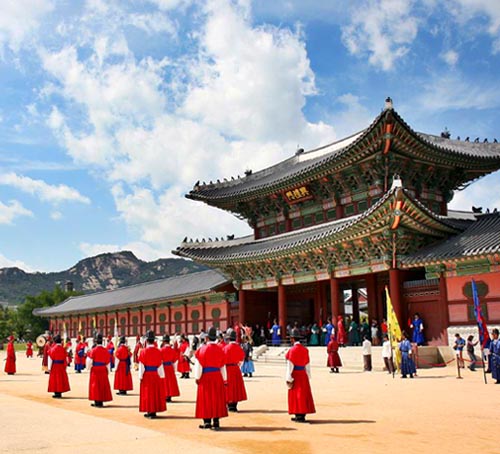
-
- The Royal Guard Changing Ceremony
- In ancient times the royal guards of Joseon Dynasty performed the given task by guarding the Gwanghwamun Gate the entrance of Gyeongbokgung Palace. The reenactment of the original ceremony began from 1996. The gate guardsmen perform the changing of the guards and hold a parade. The guards, uniforms, weapons and accessories as well as their strict ceremonial procedures catch the eyes of people especially foreign tourists when guardsmen perform the changing of guards in traditional costumes at the main gate of Gyeongbokgung Palace in downtown Seoul. Be sure to bring a camera to take lots of pictures.
- The Royal Guard Changing Ceremony
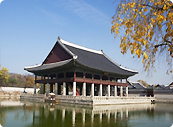
-
- Gyeongbok Palace
-
Gyeongbokgung, or the Palace of Felicitous Blessing, was the main palace of the Joseon Dynasty (1392-1910) and it opened in 1395, the fourth year of the reign of King Taejo, the founding monarch of Joseon.
The palace attained all necessary facilities and systems commensurate with its status as Joseon's primary palace during the reign of King Sejong. It was burnt down in 1592 during the Japanese invasions and remained in ruins until extensive reconstruction was undertaken in 1868. However, many of the structures were removed during the Japanese colonial rule (1908-1945).
The Cultural Heritage Administration has been restoring the palace since 1990. First of all, the old Japanese government-general building was dismantled and Heungnyemun and its cloisters were reconstructed. The bedchambers of the king and the queen, named Gangnyeongjeon and Gyotaejeon, as well as Donggung, or the East Palace, the residence of crown prince, were restored. Currently, Gwanghwamun, the palace's main gate, is being rebuilt. Thus, the palace is regaining its old splendor.
- Gyeongbok Palace
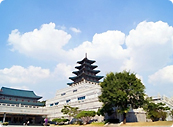
-
- National Folk Museum
-
The National Folk Museum of Korea, which was established in 1945, is located at the center of Seoul and functions as an educational venue that enables visitors to understand how Koreans have lived from traditional times to the present. The Museum investigates, researches, and acquires artifacts and various sources on the folkways and lifestyles of Koreans in the past and present.
The Museum's exhibition is divided into three halls and an open-air exhibition.
Hall 1 follows a timeline in the development of Korean folkways and lifestyles, starting from prehistory.
Hall 2 focuses on how people worked for their living and obtained the necessities of life, while Hall 3 covers the typical lifetime events of an upper class person in traditional Korean society.
Special exhibitions are also opened at least four times a year to broaden understanding of Korean folkways.
- National Folk Museum
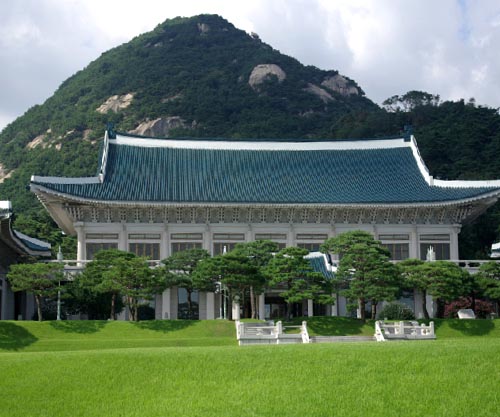
-
- Pass By The Presidential Blue House
-
Korean political system is presidential system which has been evolved and developed by Korean people after Korean war. The president’s term in office is 5 years and current president is Park, Geun Hye who is the first woman won the presidential election. The Korean president stays in the Blue house. The Blue house is not opened to the public where you can visit only your visit reservation was granted. However you can take a picture from outside.
In the blue house, there is a main building where private office for the president, press room, meeting rooms, and residential area are located and the other building where national secretary office, security office, Press center and Banquet hall are located.
The color blue represents eternity and peace and it applies to the roof color of the blue house and you cannot miss why it is called "the blue house".
- Pass By The Presidential Blue House
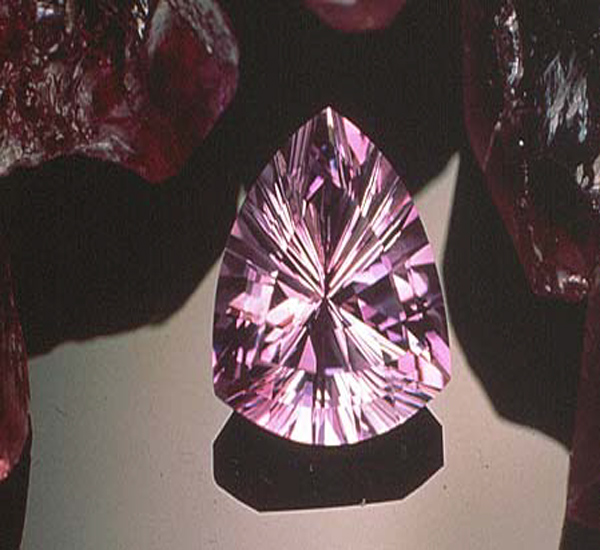
-
- Amethyst or Ginseng Center
-
The colour of Amethyst is as unique as it is seductive, though in fact this gemstone of all gemstones is said to protect its wearer against seduction.
Korean Amethyst is extravagance in violet since it has been formed from granite stone base since 5000 years. Moses described it as a symbol of the Spirit of God in the official robes of the High Priest of the Jews, and the Russian Empress Catherine the Great sent thousands of miners into the Urals to look for it. It was said to protect crops against tempests and locusts, bring good fortune in war and in the hunt, drive out evil spirits and inspire the intellect.
- Amethyst or Ginseng Center
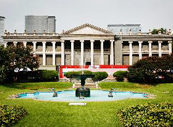
-
- Deoksugung Palace
- Deoksugung Palace is unique among Korean palaces in having a modern seal engraving and a western style garden and fountain. Medieval and modern style architecture exists together in harmony in Deoksugung Palace. The Changing of the Royal Guard can be seen in front of Daehanmun (Gate) and is a very popular event for many visitors. During the Joseon Dynasty, the royal guard was responsible for opening and closing the palace gate as well as patrolling around the gate area. Outside the palace is a picturesque road flanked by a stone wall which is much loved by visitors.
- Deoksugung Palace
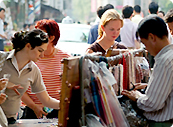
-
- Insadong Antique Shop Alley
-
The streets of Insadong are alive with traditional culture.
The area that is now known as Insadong has been the center of culture since the Joseon era. Over the years a wider variety of arts have continued to move their way into this neighborhood making it one of the best places in the world to find diverse genres of art. In 1997, car traffic was banned on the main street of Insadong making it friendlier for visitors and improving the overall general atmosphere.
Forty percent of all antique stores in Korea can be found in Insadong. That is quite an astounding number for just one small neighborhood. But as you begin to explore the tiny alleys shooting off from the main street you start to realize that this is only the beginning. As you continue to wander around the alleys and byways of Insadong you will find stores selling old books, pictures and calligraphy. You will also undoubtedly find old photographs, pottery, wooden containers, jewelry, ceramics and earthenware.
- Insadong Antique Shop Alley
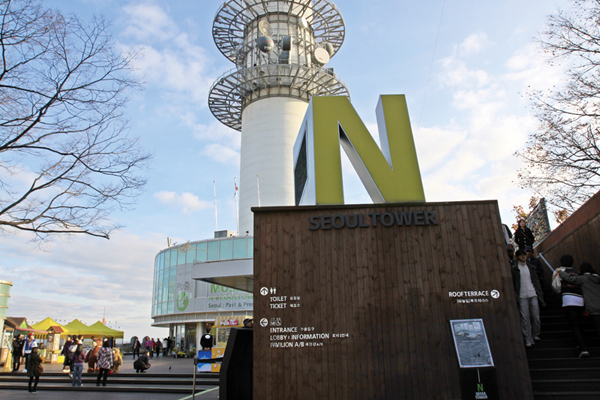
-
- N Seoul Tower
-
With a commanding view of Seoul, N Seoul Tower is equipped with observatories and a revolving restaurant for a full 360° view.
There is also a personal media play zone where you can check out the latest movie trailers and music videos, pavilion exhibition halls where various cultural events are held, and a roof terrace where you can enjoy a scenic view of Seoul...
- N Seoul Tower
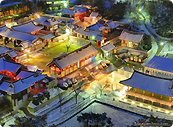
-
- Namsangol Hanok Village
-
Namsangol Hanok Village is a collection of five hanoks (traditional Korean houses) from the Joseon Dynasty (1392-1910), recovered from different parts of the city and relocated to the northern foot of Namsan.
The interiors of each of these five houses reflect owners from different walks of life, from the middle class to the yangban (who were mainly high government officials, noblemen and aristocrats).
The best representation of a hanok style house would be the house of Queen Yun's parents. Most hanoks, including this one, are built in the rectangular shape of the Korean letter "ㅁ" with an outdoor courtyard centered in the middle. On each side of the "ㅁ" is a different area of the house.
The main areas of a hanok house include a sarangchae for greeting guests, an anchae where the lady of the house resided and a daemunganchae which is just inside the main gate of the house.
Hanok houses also feature special doors which are designed to partition areas of the house into separate rooms. These doors allow for rooms such as the sitting room and master bedroom to be joined into a single large room or to widen a room whenever necessary.
- Namsangol Hanok Village
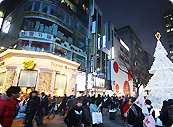
-
- Myeongdong
- Myeongdong became more of a commercial district after Korean War in 1950. The economy blossomed in 1960s and the area became for the center of finance, commerce and culture. In 1980s, new districts like Kangnam and Yeoido have been developed that weakened status and importance of Myeongdong. Recent aggressive investment in Myeongdong take its old time glory back and now Myeongdong is hot enough place to attract not only travelers but local people back from Kangnam. The most popular shopping category is "beauty." Competitive price and quality are well known among international travelers. The faceshop, Skin food, Misha, Aritaum, Hanskin, VanillaCo are all popular to travelers even more than to local. Myeongdong is the best place for shopping beauty products. Not only local brands, global big fashion brands like Zara, Forever 21, and GAP opened their first shop in Korea with the largest size. They are all nearby to make shopping easy. Street food is never to be missed.
- Myeongdong
-


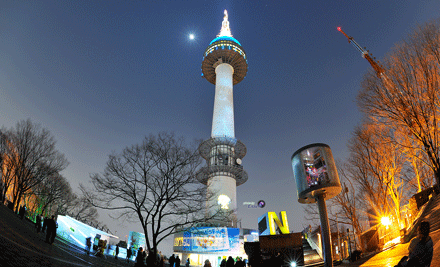

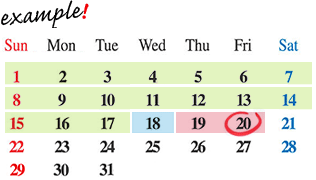

 E-mail
E-mail


























